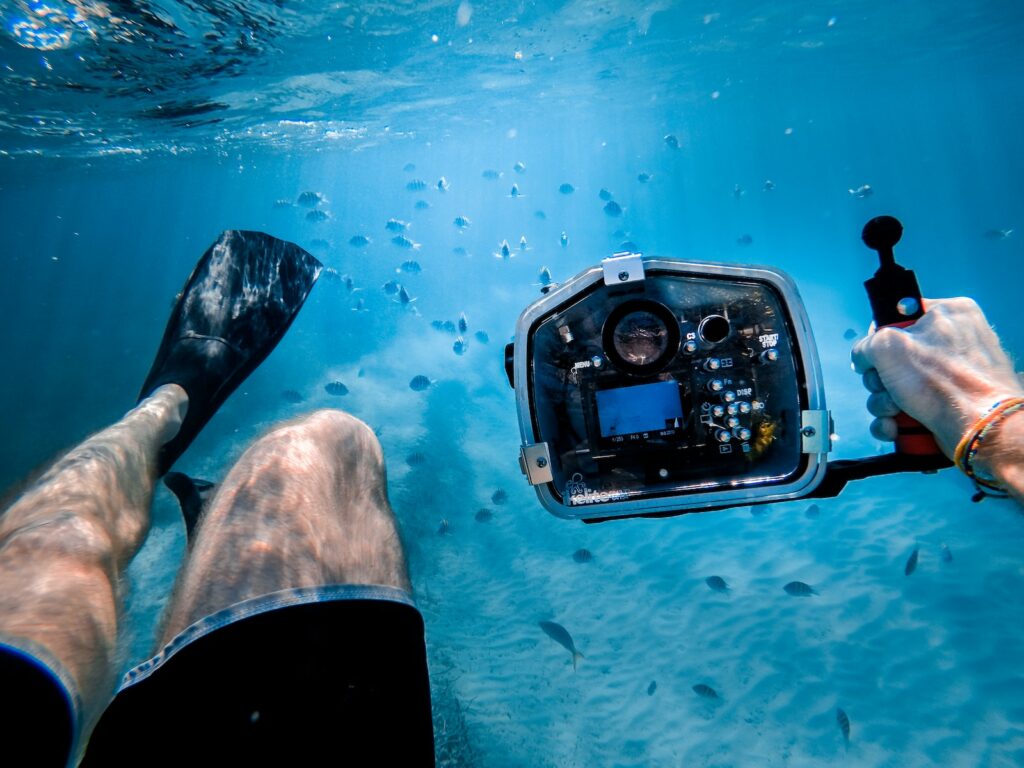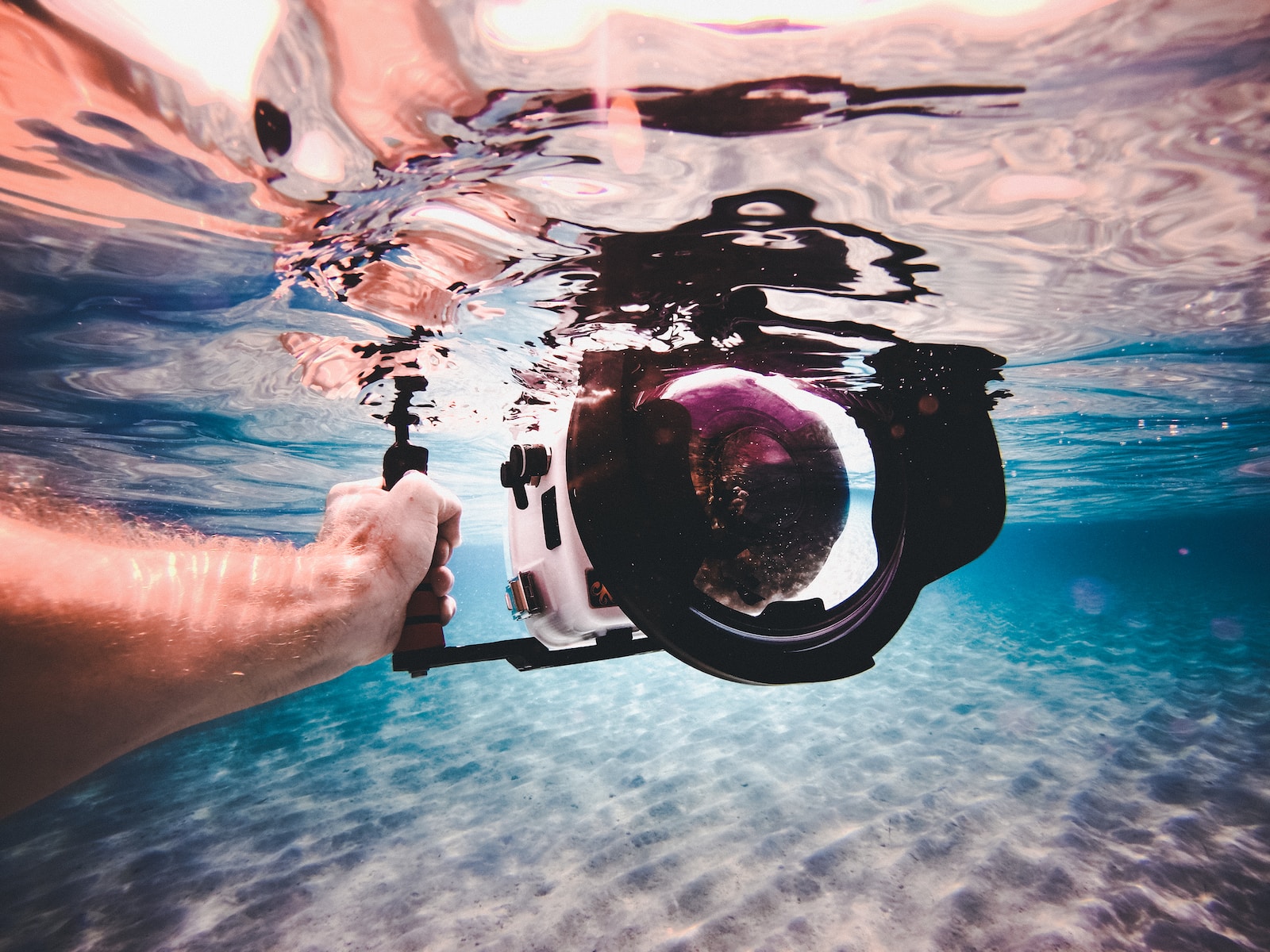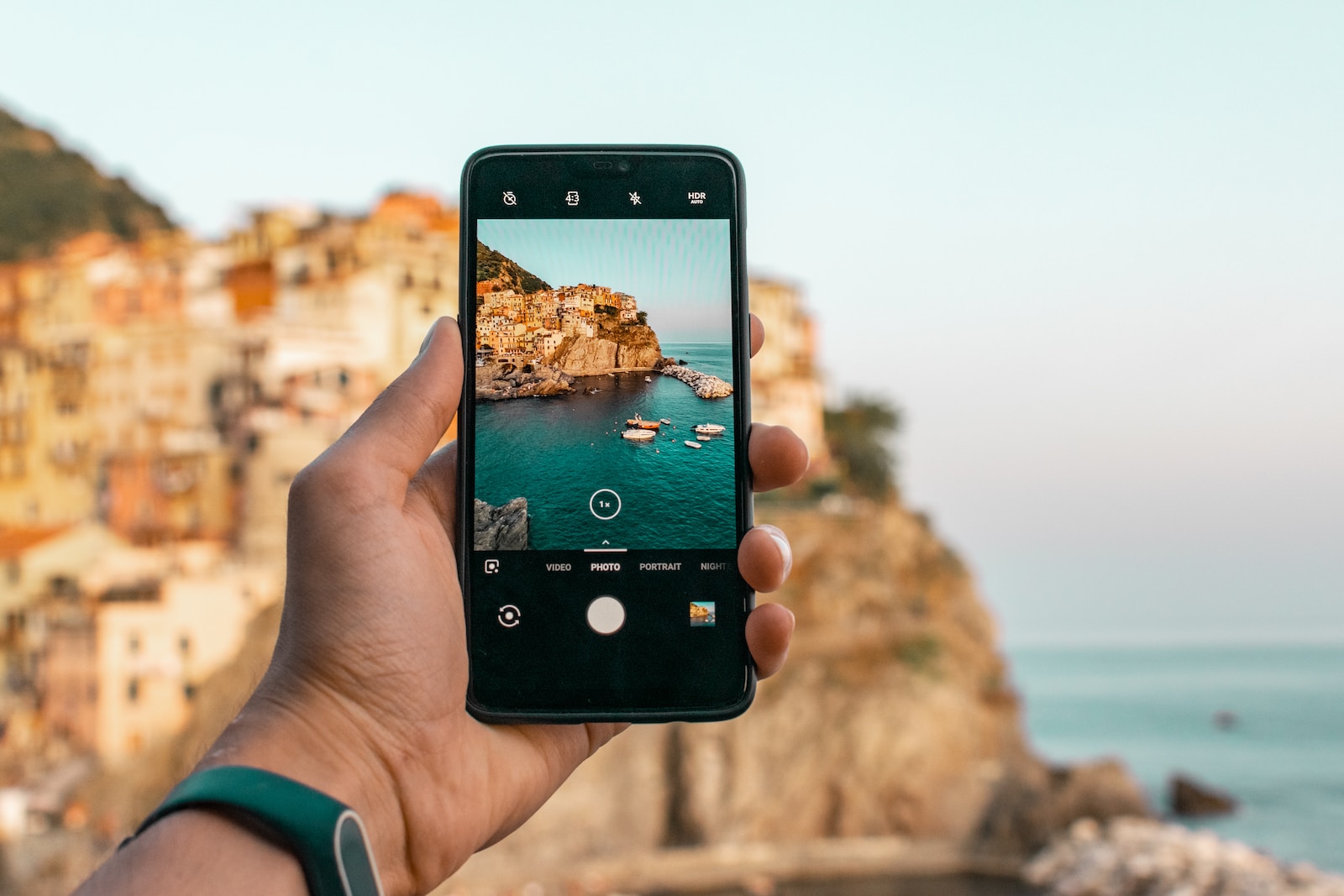Welcome to our blog on troubleshooting common issues with underwater cameras. Whether you’re a professional photographer or an avid snorkeler, encountering problems with your camera can be frustrating. But worry not, as we’ve got you covered! In this article, we will provide you with tips and fixes for the most frequently faced problems by underwater camera users. From blurry images to water leakage, we will delve into the root causes and offer practical solutions. So let’s dive right in and get your underwater photography experience back on track!
Table of Contents
- Troubleshooting Common Issues with Underwater Cameras
- Troubleshooting Common Issues with Underwater Cameras
- Frequently Asked Questions
- 1. Why is my underwater camera not turning on?
- 2. How can I prevent fogging on my underwater camera lens?
- 3. What should I do if water leaks into my underwater camera?
- 4. Why are my underwater photos blurry?
- 5. How can I clean my underwater camera properly?
- 6. What should I do if my underwater camera stops working during a dive?
- Wrap Up
Troubleshooting Common Issues with Underwater Cameras
1. Blurry Images
One of the most common issues users face with underwater cameras is capturing blurry images. This can be attributed to various factors, such as poor focus, motion blur, or incorrect camera settings. To address this problem, follow these steps:
- Check Focus: Ensure that your camera’s autofocus is functioning correctly. Make sure the subject of your photo is in focus before taking the shot. If your camera has a manual focus option, consider using it to fine-tune the focus.
- Stabilize Your Camera: Underwater environments can be turbulent, leading to motion blur. To counter this, use a stable platform or a tripod specially designed for underwater photography. If handholding the camera, practice slow, steady movements to minimize blurriness.
- Adjust Camera Settings: Review your camera settings and make necessary adjustments. A faster shutter speed can help freeze fast-moving subjects and reduce motion blur. Experiment with different ISO settings to find the right balance between light sensitivity and image quality.
- Use Adequate Lighting: Insufficient light can lead to slower shutter speeds, causing blurriness. Consider using underwater strobes or external lights to illuminate your subjects properly. Position the lights to minimize shadows and enhance image clarity.
- Maintain Proper Buoyancy: If you’re diving or snorkeling, maintaining neutral buoyancy is essential to minimize camera shake. Practice buoyancy control techniques to keep yourself steady underwater, allowing for sharper images.
- Keep Your Lens Clean: Water droplets, algae, or debris can accumulate on the camera’s lens or housing, leading to blurry photos. Regularly check and clean your lens and housing to ensure clear shots.
- Use Image Stabilization: If your camera has image stabilization features, activate them. This technology can help compensate for minor movements and reduce blurriness.
- Shoot in RAW: Shooting in RAW format allows for more extensive post-processing adjustments, including sharpening, which can help salvage slightly blurry images during editing.
- Practice and Patience: Underwater photography requires practice. Take your time to familiarize yourself with your camera and the underwater environment. Patience and experience will contribute to better, sharper images over time.
2. Water Leakage
Dealing with water leakage is a nightmare for underwater camera enthusiasts. To avoid this issue, take the following precautions:
- Properly Seal Your Camera Housing: Ensure that your camera housing is tightly sealed before submerging it. Check for any cracks or damaged O-rings and replace them if necessary. Proper sealing is your first line of defense against water intrusion.
- Regularly Inspect O-Rings: O-rings are critical for maintaining a watertight seal. Check them for signs of wear, damage, or dirt before each dive. Apply a thin layer of silicone grease to keep them in good condition and improve their sealing performance.
- Follow Manufacturer’s Guidelines: Always adhere to the manufacturer’s instructions and guidelines for your specific camera and housing. These guidelines often include recommended maintenance procedures and sealing techniques.
- Perform a Leak Test: Conduct a thorough leak test before each underwater excursion. Submerge your camera housing in a basin of water for a few minutes (without the camera inside). Look for any air bubbles escaping, as they indicate potential leaks.
- Use a Vacuum System: Some underwater camera housings come equipped with a vacuum system. This system creates negative pressure inside the housing, making it easier to detect leaks before diving. Consider using this additional layer of protection.
- Avoid Rapid Temperature Changes: Sudden temperature changes can cause condensation inside the housing, potentially leading to water damage. Allow your camera and housing to acclimate to the water’s temperature before use.
- Be Mindful of Depth Ratings: Ensure your camera housing is rated for the depth you plan to dive. Exceeding the depth rating can compromise the housing’s integrity and increase the risk of leaks.
- Secure All Latches and Locks: Double-check that all latches, locks, and closures on your camera housing are properly secured. Even a small gap can allow water to seep in.
- Limit Housing Openings: Minimize the number of times you open the camera housing while underwater. Each opening increases the chance of water entering the housing.
- Have a Backup Plan: Carry a backup camera or a disposable waterproof camera as a precautionary measure. In case of a housing failure, you can still capture memories without risking your primary camera.
- Stay Updated on Maintenance: Keep yourself informed about any recalls, updates, or improvements for your camera housing model. Manufacturers may release updates to enhance sealing and durability.
- Practice Buoyancy Control: Maintaining proper buoyancy while diving or snorkeling can help prevent accidental knocks or collisions that might damage the camera housing and potentially lead to leaks.
By following these precautions and regularly maintaining your underwater camera housing, you can significantly reduce the risk of water leakage and enjoy worry-free underwater photography.
3. Battery Drain
Running out of battery life underwater can ruin a perfect shot. To extend your camera’s battery life and prevent unexpected drainage, consider the following:
- Carry Spare Batteries: Always have extra, fully charged batteries on hand. This ensures you have a backup power source if your primary battery runs out during a dive.
- Use a Battery Grip: Some underwater camera housings allow you to attach a battery grip. These grips accommodate additional batteries, significantly extending your shooting time.
- Optimize Power Settings: Adjust your camera’s power settings to minimize energy consumption. This may include dimming the screen, using power-saving mode, or setting shorter display timeouts.
- Turn Off Unused Features: Disable any unnecessary camera features, such as Wi-Fi, GPS, or Bluetooth, when they’re not in use. These features can drain the battery quickly.
- Monitor Battery Levels: Keep an eye on your battery levels during your underwater shoot. Many cameras provide a battery level indicator. Knowing how much power you have left allows you to plan your shots accordingly.
- Limit Continuous Shooting: Avoid prolonged continuous shooting, especially in burst mode, as it can deplete your battery quickly. Take shots mindfully, and pause between bursts to conserve power.
- Disable Auto-Focus: Continuous auto-focus can be a significant drain on your battery. If you can, use manual focus settings to reduce the camera’s autofocus activity.
- Keep the Camera Warm: Cold water can reduce battery performance. Try to keep your camera at a stable, moderate temperature by using a thermal insulating cover or a hand warmer placed near the camera housing.
- Pre-chill Batteries: If you’re in a warm environment before diving, consider pre-chilling your spare batteries in a cooler or underwater housing to extend their lifespan.
- Shoot in Short Bursts: Instead of keeping the camera on continuously, power it on just before taking a shot and power it off afterward. This intermittent usage can help conserve battery power.
- Use External Power Sources: Some underwater camera setups allow for external power sources, such as power banks or underwater battery packs. Utilizing these can significantly extend your shooting time.
- Prioritize Shots: Plan your shots in advance and prioritize the most critical ones. This way, you can focus your battery usage on capturing the shots that matter most.
- Monitor Depth and Temperature: Certain camera models may offer depth and temperature sensors that can help you optimize settings based on your diving conditions, helping you conserve battery life.
- Carry a Battery Checker: Invest in a battery checker or voltage monitor to assess the condition of your batteries before use. This helps you identify and replace weak batteries, ensuring reliable performance.
By implementing these strategies and being mindful of your camera’s power consumption, you can significantly extend your underwater camera’s battery life and avoid the frustration of running out of power during a critical moment.
4. Foggy Lens
A foggy lens can instantly ruin your underwater photographs. To prevent your lens from fogging up, try these remedies:
- Use Anti-Fog Inserts: Many underwater camera housings have compartments for anti-fog inserts. These inserts absorb moisture and help prevent condensation on the lens. Make sure they are clean and replaceable as needed.
- Apply Anti-Fog Gel: Apply a specialized anti-fog gel or spray to the inside of your camera housing lens. These products create a protective barrier that reduces the chances of fogging. Follow the manufacturer’s instructions for best results.
- Prevent Warm Air Inside the Housing: Avoid introducing warm air into the camera housing when closing it before diving. Warm air can condense and cause fog. Ensure the housing is at the same temperature as the surrounding water.
- Spit Method: A quick and inexpensive method to prevent lens fog is to use a drop of saliva. Before closing the camera housing, spit on the inside of the lens port and spread it evenly. Rinse it with a bit of water and then submerge the camera. This can be surprisingly effective.
- Use a Defogging Cloth: Keep a defogging cloth or microfiber towel handy. Gently wipe the inside of the lens port just before sealing the housing. This helps remove moisture and prevents fogging.
- Control Your Breathing: Be mindful of your breath while diving. Avoid exhaling directly onto the camera lens or housing. Breathing gently away from the camera helps reduce moisture buildup.
- Ventilate the Housing: When not in use, leave your camera housing open in a dry, well-ventilated area to allow any residual moisture to evaporate. Ensure it’s protected from dust and debris.
- Limit Camera Use in Extreme Temperature Changes: Rapid changes in temperature can cause condensation. Try to avoid taking your camera from a cold environment into a warm one (or vice versa) without allowing it to acclimate slowly.
- Add Silica Gel Packets: Place silica gel packets inside the camera housing to absorb moisture. Ensure these packets are secure and won’t interfere with camera operation.
- Consider an Underwater Heated Lens: Some specialized underwater housings offer heated lenses to prevent fogging. While these can be costly, they can be highly effective in extreme conditions.
- Avoid Overheating: In hot and humid conditions, prevent the camera from overheating by using an underwater shade or cover. Excessive heat inside the housing can exacerbate fogging issues.
- Keep Lens Clean: Make sure your lens is clean and free of any residue before your dive. Dirt or oils can exacerbate fogging issues.
- Practice Proper Sealing: Ensure your camera housing is properly sealed to prevent moisture from entering in the first place. A good seal minimizes the potential for condensation.
By implementing these strategies and choosing the right anti-fog solutions, you can significantly reduce the risk of a foggy lens and capture clear, stunning underwater photographs.
Interesting fact: Did you know that the first commercially available underwater camera was introduced in the mid-1960s?
5. Camera Housing Maintenance
Regular maintenance of your camera housing is essential to ensure its longevity and performance. Here are some tips to keep your camera housing in top shape:
- Rinse with Freshwater: After each dive, rinse your camera housing thoroughly with fresh, clean water. This helps remove saltwater, sand, and debris that can corrode or damage the housing.
- Submerge and Test: Before every dive, without the camera inside, submerge the housing in a basin of water to check for any potential leaks. Look for air bubbles escaping, which can indicate issues with the housing’s integrity.
- Inspect Seals and O-Rings: Regularly examine all seals and O-rings for signs of wear, cracks, or dirt. Replace damaged seals or O-rings immediately to maintain a watertight seal.
- Apply Silicone Grease: Apply a thin layer of silicone grease to the O-rings and sealing surfaces. This lubrication helps create a secure seal and prevents the O-rings from drying out or cracking.
- Check Housing Latches: Inspect all latches, locks, and closures on the housing. Ensure they are functioning correctly and closing tightly to prevent water from entering.
- Clean Ports and Lenses: Keep the lens port and camera lens clean and free from scratches. Use a soft microfiber cloth and an appropriate lens cleaning solution to remove dirt and smudges.
- Avoid Direct Sunlight: Store your camera housing away from direct sunlight when not in use. Prolonged exposure to sunlight can damage rubber seals and O-rings.
- Use a Protective Cover: Consider using a protective cover or neoprene housing sleeve to shield your camera housing from potential impacts and scratches during transport and storage.
- Dry Thoroughly: After rinsing, allow the housing to dry completely before storing it. Ensure that no moisture is trapped inside the housing, which can lead to mold or corrosion.
- Store in a Dry, Cool Place: Store your camera housing in a dry, cool environment. Avoid areas with extreme temperature fluctuations or high humidity.
- Read the Manual: Familiarize yourself with the manufacturer’s maintenance recommendations specific to your camera housing model. Follow their guidelines for cleaning and upkeep.
- Service and Professional Inspection: Periodically, have your camera housing professionally inspected and serviced. This ensures that internal components and seals remain in optimal condition.
- Keep Spare Parts: It’s wise to keep spare O-rings and seals in your camera maintenance kit, especially if you’re on an extended dive trip. These can be crucial in case of unexpected damage.
- Protect Against Corrosion: If you dive in saltwater frequently, consider using corrosion-inhibiting sprays or coatings on metal parts to prevent corrosion.
- Record Maintenance History: Maintain a record of your camera housing’s maintenance history, including dates of servicing and any repairs or replacements performed.
By following these maintenance tips and practicing proper care, you can extend the life of your underwater camera housing and ensure it continues to provide reliable protection for your camera equipment during underwater adventures.
6. Memory Card Issues
Experiencing problems with your memory card can result in lost or corrupted photos. To prevent these issues, follow these precautions:
- Use High-Quality Memory Cards: Invest in reputable and high-quality memory cards with sufficient storage capacity. Avoid generic or low-quality brands, as they may be more prone to issues.
- Format the Memory Card: Always format your memory card in your camera before each use. This ensures compatibility and helps prevent file structure errors that can lead to data corruption.
- Carry Spare Memory Cards: Have extra memory cards on hand during your underwater shoots. This allows you to switch to a fresh card if one becomes full or experiences issues.
- Check Compatibility: Ensure that your memory card is compatible with your camera model and underwater housing. Some cameras have specific requirements for memory card types and speeds.
- Handle Memory Cards Carefully: Avoid touching the metal contacts on the memory card, as oils and debris from your fingers can cause connectivity problems. Handle the cards by their edges.
- Protect from Water Exposure: Keep your memory cards in a waterproof case or container when not in use. This protects them from moisture and potential water damage.
- Store in a Dry Place: Store your memory cards in a dry, cool place when not in use. High humidity and temperature fluctuations can negatively impact card performance.
- Backup Your Data: Regularly transfer your photos from the memory card to a secure storage device or cloud service. This ensures that even if a card fails, you won’t lose all your valuable images.
- Check for Damage: Inspect your memory cards for physical damage, such as cracks or bent pins. Do not use damaged cards, as they are more likely to fail.
- Avoid Overfilling: Avoid filling your memory card to its maximum capacity, as this can increase the risk of file corruption. Leave some free space for the camera to write data without errors.
- Turn Off the Camera Before Removing: Always power off your camera before removing the memory card. This ensures that all data is properly written and reduces the risk of file corruption.
- Scan for Errors: Periodically run a file system check or error scan on your memory cards using your computer. This can help identify and fix minor issues before they become major problems.
- Update Firmware: Keep your camera’s firmware up to date. Manufacturers may release updates that improve memory card compatibility and reliability.
- Use a Card Reader: When transferring photos to your computer, use a quality card reader rather than connecting the camera directly. Card readers are less prone to causing data transfer errors.
- Carry Cleaning Supplies: Include cleaning supplies like a microfiber cloth or canned air in your camera maintenance kit to keep the memory card slot clean and free from debris.
By following these precautions and practicing good memory card management, you can reduce the risk of experiencing memory card issues while capturing underwater photos and ensure the safety of your precious images.

By implementing these troubleshooting strategies and following our tips, you’ll be able to maximize your underwater camera’s performance and capture stunning images in no time. Leave your camera issues behind and dive into a world of breathtaking underwater photography!
Troubleshooting Common Issues with Underwater Cameras
Underwater photography is an exhilarating and rewarding hobby, allowing us to capture the mesmerizing beauty of the underwater world. However, like any technology, underwater cameras can sometimes encounter issues that can hinder our ability to capture the perfect shot. In this blog post, we will explore some common problems faced by users of underwater cameras and provide tips and fixes to help you troubleshoot these issues.
1. Blurry or Out of Focus Images
One of the most common issues faced by underwater photographers is capturing blurry or out of focus images. This can be quite frustrating, especially when you believe you’ve captured a stunning shot only to discover it’s not as sharp as you hoped.
To overcome this issue, it’s important to ensure that your camera’s autofocus is working properly. Clean the camera lens and make sure there are no obstructions or water droplets affecting the focus. Additionally, consider shooting in manual focus mode to have more control over the focus points and ensure that your subject is sharp.
Another useful tip is to use a fast shutter speed to minimize motion blur. Underwater environments can be challenging due to the constant movement of water and marine life, so adjusting your camera settings to freeze the motion can greatly improve the sharpness of your images.
2. Water Leakage
Water leakage is a nightmare for any underwater photographer. It not only puts your camera at risk but can also spoil your entire underwater experience. To prevent water leakage, it’s crucial to check the housing and seals of your camera before every dive.
Start by inspecting the O-rings and ensuring they are clean, properly lubricated, and seated correctly. Make it a habit to perform a “leak test” before every dive by submerging the empty housing in shallow water for a few minutes, carefully monitoring for any signs of leaks. Additionally, invest in a quality underwater housing and consult the manufacturer’s guidelines for proper maintenance and care.
3. Poor White Balance and Color Cast
Underwater photography often presents challenges related to color reproduction. The water itself can introduce a color cast or make your images appear bluish or greenish due to the absorption and scattering of light.
To combat this issue, consider using custom white balance settings on your camera to adjust for the specific underwater lighting conditions. If shooting in RAW format, you can also correct white balance during the post-processing stage to restore accurate colors.
Using artificial lighting such as strobes or video lights can also drastically improve color reproduction and allow you to capture the vibrant hues of the underwater world.
By being aware of these common issues and applying these troubleshooting tips, you can enhance your underwater photography experience and capture breathtaking images that truly showcase the beauty of the underwater world.
Stay tuned for more articles on underwater cameras, troubleshooting techniques, and other helpful tips to take your underwater photography to the next level!
Frequently Asked Questions
1. Why is my underwater camera not turning on?
If your underwater camera is not turning on, make sure the battery is fully charged and properly inserted. Double-check that the battery compartment is securely closed. If the problem persists, try a different battery or contact customer support for further assistance.
2. How can I prevent fogging on my underwater camera lens?
To prevent fogging on your underwater camera lens, you can use anti-fog wipes or apply a specialized anti-fog solution before each use. Additionally, make sure the camera housing is properly sealed to minimize the chances of moisture entering and causing fogging.
3. What should I do if water leaks into my underwater camera?
If water leaks into your underwater camera, immediately remove it from the water and dry it thoroughly. Open all compartments and remove the battery, memory card, and any other removable parts. Place the camera in a bag filled with uncooked rice or silica gel packets to absorb moisture. Contact a professional camera repair service to assess and fix any damage.
4. Why are my underwater photos blurry?
Blurriness in underwater photos can be caused by several factors, including camera movement, poor lighting conditions, or incorrect focusing settings. Make sure to hold the camera steady, use proper lighting techniques, and adjust the focus settings according to your subject. Consider using a tripod or underwater stabilizer for better stability.
5. How can I clean my underwater camera properly?
To clean your underwater camera, start by rinsing it with fresh water after each use to remove salt or debris. Gently wipe the lens and housing with a soft cloth or lens cleaning tissue. Avoid using harsh chemicals or abrasive materials that may damage the camera’s exterior. If necessary, consult the camera’s user manual for specific cleaning instructions.
6. What should I do if my underwater camera stops working during a dive?
If your underwater camera stops working during a dive, try removing and reinserting the battery or turning it off and on again. Check for any signs of water leakage and ensure all compartments are tightly sealed. If the camera still doesn’t work, it’s best to surface and seek professional help.
Wrap Up
Hopefully, this article has provided you with some valuable tips and solutions to help troubleshoot common issues with your underwater camera. Remember, being prepared and taking proper care of your equipment can go a long way in avoiding problems in the first place.
If you are still experiencing difficulties, don’t hesitate to reach out to the manufacturer’s customer support or consult with a professional in the field of underwater photography. They may have additional advice or specialized solutions tailored to your specific camera model.
We would love to hear about your experiences with underwater cameras and any other troubleshooting techniques you have found helpful. Leave us a comment below and let’s keep the conversation going!


